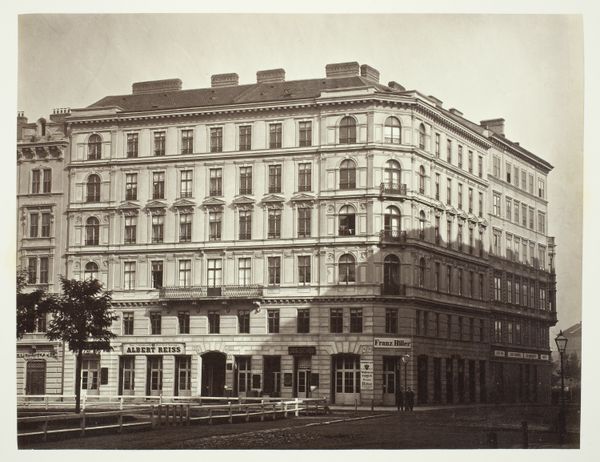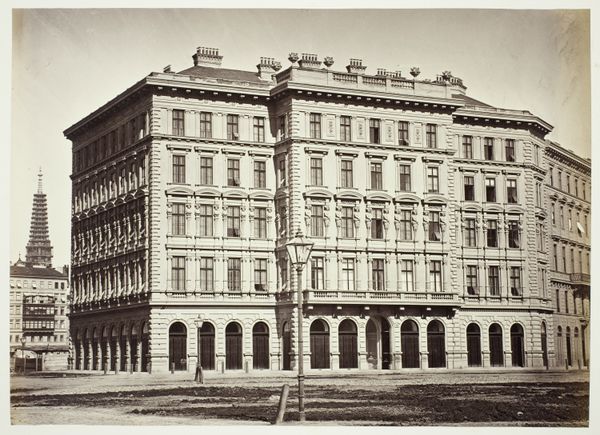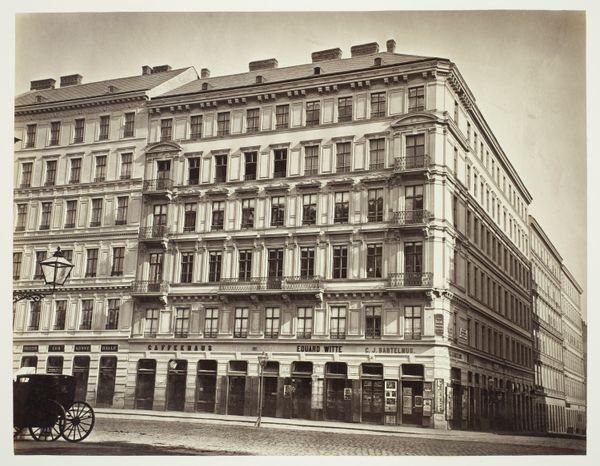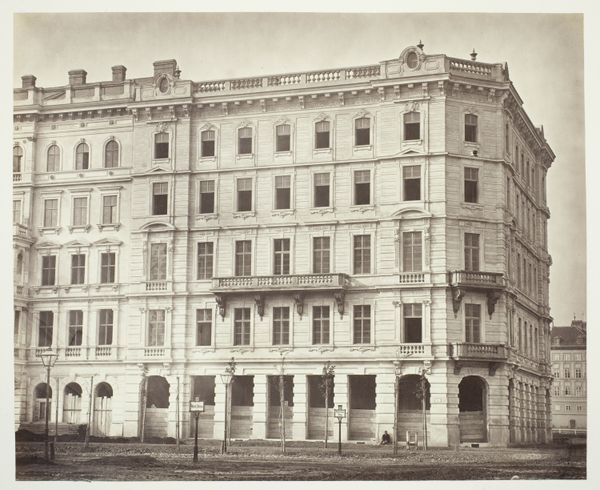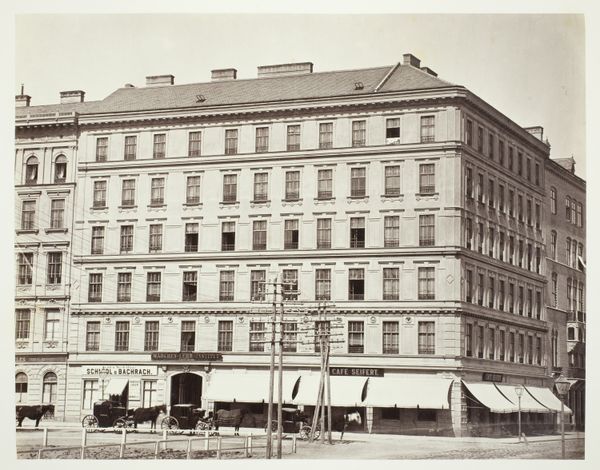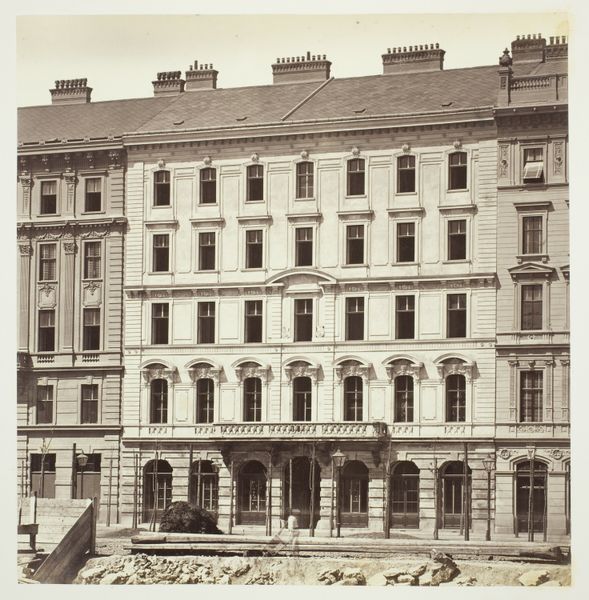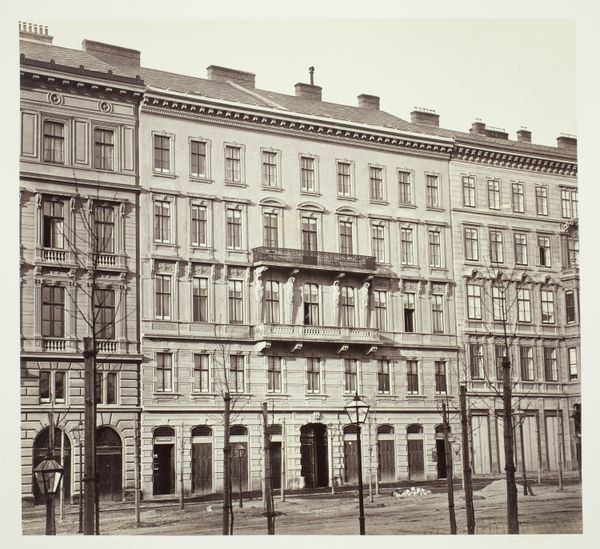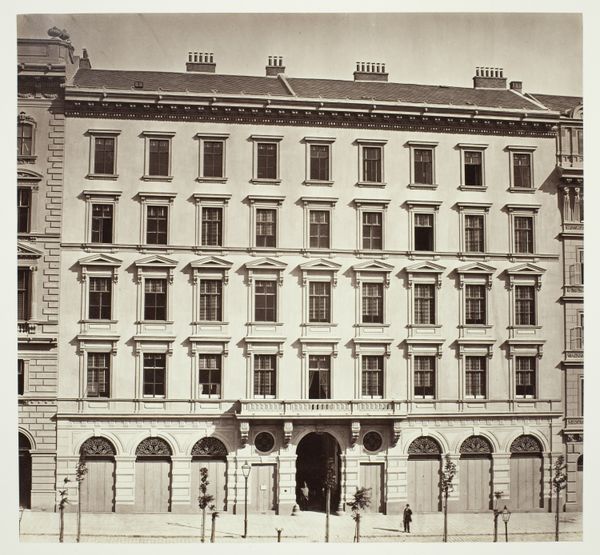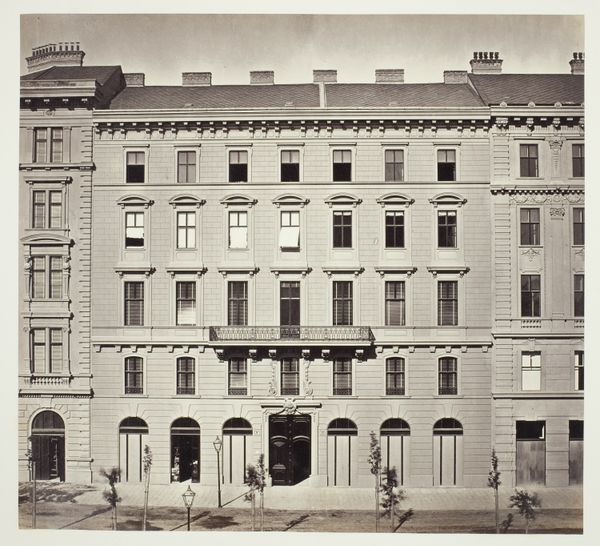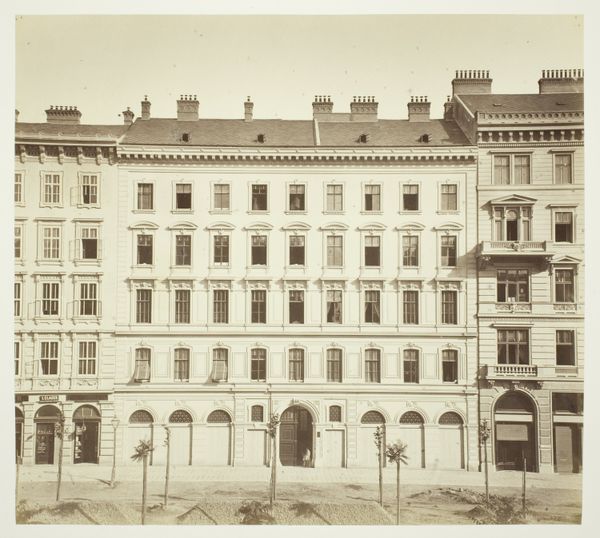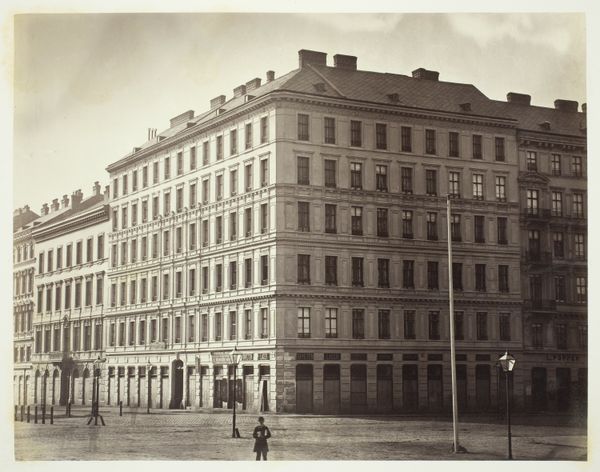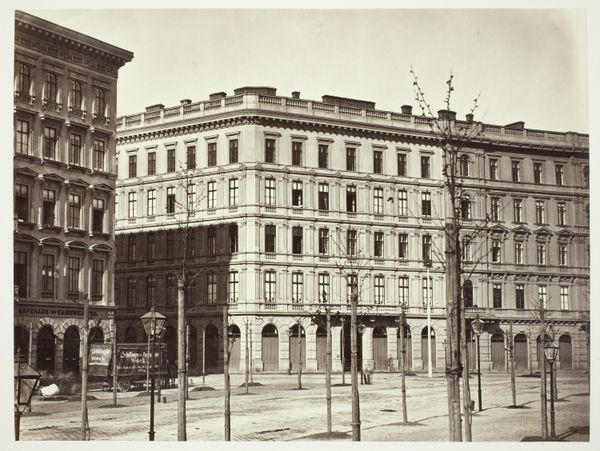
Elisabethstraβe No. 8, Zinshaus des Grafen Otto Abensberg und Traun c. 1860s
0:00
0:00
print, photography, architecture
#
16_19th-century
# print
#
photography
#
monochrome photography
#
19th century
#
cityscape
#
architecture
#
monochrome
Dimensions: 27.9 × 33.3 cm (image/paper); 42.8 × 61.3 cm (album page)
Copyright: Public Domain
Curator: Here we have an arresting cityscape, a photographic print entitled "ElisabethstraBe No. 8, Zinshaus des Grafen Otto Abensberg und Traun," believed to be from the 1860s. The artist remains anonymous. It captures a stately residential building. What are your first impressions? Editor: It feels imposing, doesn't it? This severe facade, the rows and rows of identical windows... There’s an almost oppressive quality to its symmetry, a stark visualization of power and privilege in brick and mortar. Curator: Indeed. In terms of symbolism, such structured uniformity suggests stability, permanence, order – values prized by the aristocracy, perhaps reflecting the Graf's desire for a physical manifestation of his own enduring legacy. Editor: And what about the residents, the everyday lives happening behind those identical windows? Were their existences as regulated and uniform as the architecture suggests? I wonder about the power dynamics embedded in a building like this – landlord and tenant, wealth and precarity... Curator: It is a powerful framing. Buildings often carry unspoken narratives. The classical detailing, like the arched windows on the ground floor and the decorative molding, consciously invokes history and tradition, suggesting an unbroken link to a glorious past. This appeals directly to collective memory and legitimacy. Editor: A constructed past, though, surely. Who gets to write that history, who is included, and who is deliberately erased? A grand building can obscure just as much as it reveals. The rigid aesthetic probably provided guidelines to who were the presumed residents. What socio-economic behaviors where implicitly required in the building and within its apartments? Curator: Certainly, there’s always a dialectic between the intended message and its reception, its impact within a given historical and social context. It offers a poignant reflection of how architectural forms communicate, often with unintended consequences and persistent power dynamics. Editor: Looking at this image through a contemporary lens encourages critical thinking. A structure can speak volumes about socio-political systems of the time, not all good. It also prompts us to reflect on the built environment's impact on people, in both the past and the present. Curator: It does give us much to ponder.
Comments
No comments
Be the first to comment and join the conversation on the ultimate creative platform.

